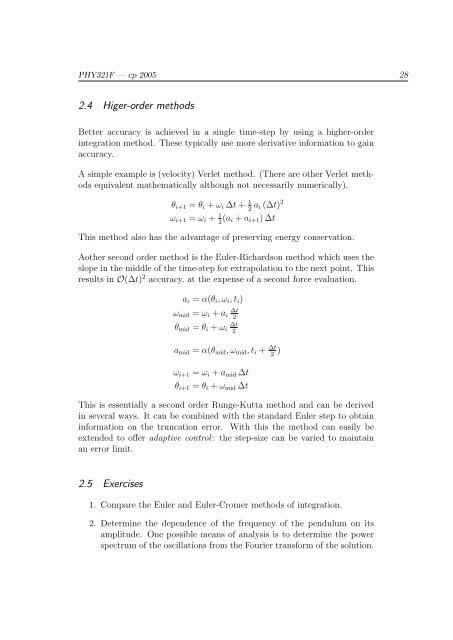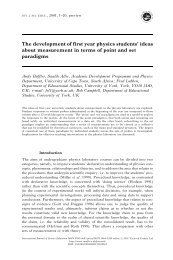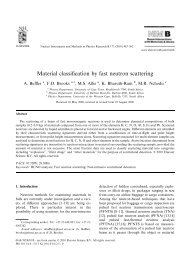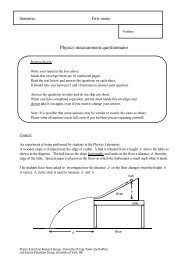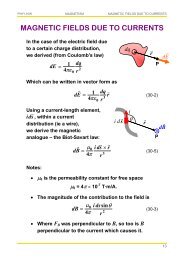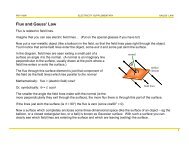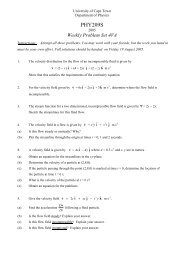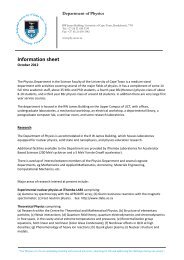Create successful ePaper yourself
Turn your PDF publications into a flip-book with our unique Google optimized e-Paper software.
PHY321F — cp 2005 28<br />
2.4 Higer-order methods<br />
Better accuracy is achieved in a single time-step by using a higher-order<br />
integration method. <strong>The</strong>se typically use more derivative information to gain<br />
accuracy.<br />
A simple example is (velocity) Verlet method. (<strong>The</strong>re are other Verlet methods<br />
equivalent mathematically although not necessarily numerically).<br />
θ i+1 = θ i + ω i ∆t + 1 2 a i (∆t) 2<br />
ω i+1 = ω i + 1 2 (a i + a i+1 ) ∆t<br />
This method also has the advantage of preserving energy conservation.<br />
Aother second order method is the Euler-Richardson method which uses the<br />
slope in the middle of the time-step for extrapolation to the next point. This<br />
results in O(∆t) 2 accuracy, at the expense of a second force evaluation.<br />
a i = α(θ i , ω i , t i )<br />
ω mid = ω i + a i<br />
∆t<br />
2<br />
θ mid = θ i + ω i<br />
∆t<br />
2<br />
a mid = α(θ mid , ω mid , t i + ∆t<br />
2 )<br />
ω i+1 = ω i + a mid ∆t<br />
θ i+1 = θ i + ω mid ∆t<br />
This is essentially a second order Runge-Kutta method and can be derived<br />
in several ways. It can be combined with the standard Euler step to obtain<br />
information on the truncation error. With this the method can easily be<br />
extended to offer adaptive control: the step-size can be varied to maintain<br />
an error limit.<br />
2.5 Exercises<br />
1. Compare the Euler and Euler-Cromer methods of integration.<br />
2. Determine the dependence of the frequency of the <strong>pendulum</strong> on its<br />
amplitude. One possible means of analysis is to determine the power<br />
spectrum of the oscillations from the Fourier transform of the solution.


